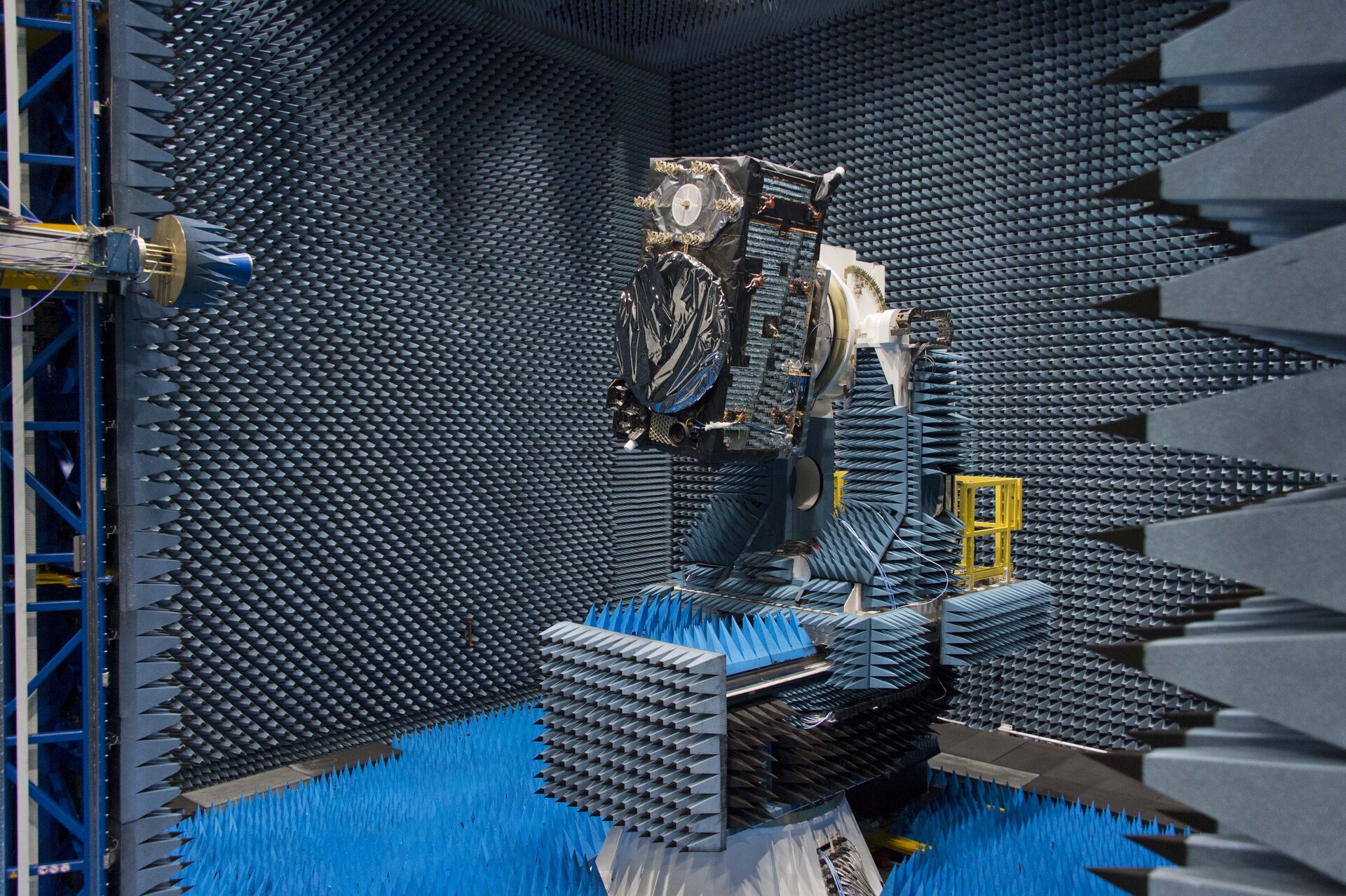What benefits do the Antenna Test Facilities deliver?
The Antenna Testing Facilities provide support to both ESA and external projects, assessing new antenna technologies and testing techniques and also qualifying antenna units, payloads and complete satellites for flight. New antennas, developed with a prototype model philosophy, can begin to be tested at an early stage of their development. The result is a reduction in the delivery time and cost of the entire antenna system.
Accurate simulation provides the ultimate‘test’ of the performance to give sufficient confidence for the instrument to be released for flight.
Projects that received recent support include vegetation monitoring mission Proba-V (evaluating the performance of the communications antennas and a navigation sensor), Sentinel-3 (characterisation of an active ground transponder for accurate calibration of its on-board SAR altimeter) and the verification of all the antennas on board the Galileo FM01 satellite, as part of its final test programme before launch.
The Antenna Testing Facilities also serve the scientific community, by investigating on innovative measurement techniques. For instance, critical testing and development was performed in these labs during the early stages of the novel measuring techniques used to verify the Planck telescope/antenna alignment by the prime contractor Thales Alenia Space in Cannes, France. Planck's telescope/antenna was hugely complex to design and test, required as it was to collect the radiation of the Cosmic Microwave Background left over from the Big Bang while avoiding any EM spillover from our Sun, Earth or the Moon.
The Antenna Testing Laboratories are actively anticipating the future needs of antenna and satellite testing by supporting development activities with its industrial and scientific partners: next generation telecommunication satellite systems could be using higher frequency bands for higher capacity, bringing challenges to alignment requirements and cost effective and accurate measurements; future earth observation and space science satellites use often the “edges” of the frequency spectrum: very low frequencies for ground penetrating instruments and biomass monitoring and (sub) mm-waves for characterization of the atmosphere of our planet but also others such as Mars and Jupiter.
The antenna technology currently being developed to tackle all these needs requires a push in the European testing capabilities and techniques for antennas, where the ESA/ESTEC Antenna Testing Facilities have a fundamental role.





